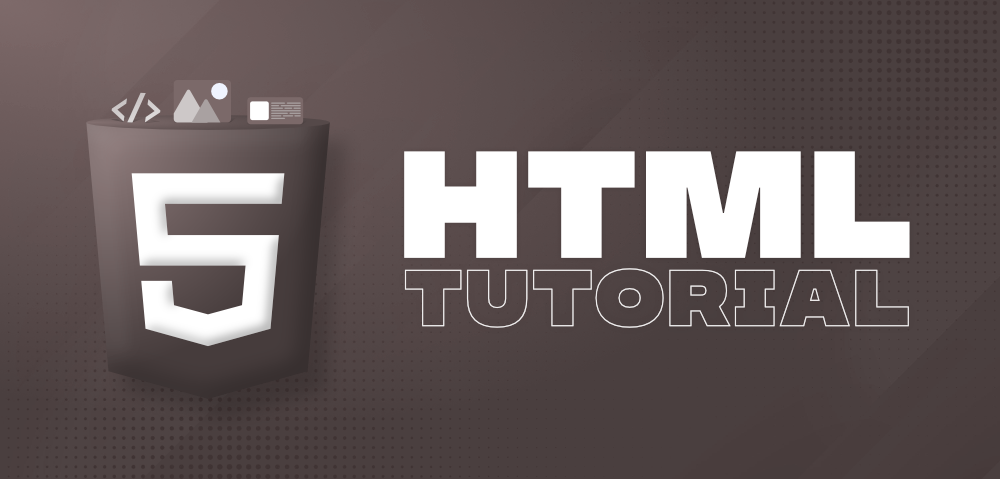HTML
Introduction
HTML is a great tool for creating websites. It's easy to learn, and you can use it to create websites that look beautiful right out of the box (or even better, if you're using an editor like Wordpress).
HTML
Web browsers use HTML to understand what you're trying to say, and they display your text accordingly.
HTML is also important because it allows you to create interactive websites with rich media elements like images and videos. You can use JavaScript (a programming language) or CSS (Cascading Style Sheets) with HTML so that the browser interprets your code as instructions for how things should look on the screen instead of just using static text content like "Hello world!"
The tag is the start of an HTML document. It isn't a tag, it's just the outermost element in an HTML document.
The element contains all other tags: head, body and section.
The tag is used to describe the content of a web page. It contains any metadata, scripts and stylesheets that should be rendered as part of the document body. The tag is not displayed on the page; it only exists in your browser's rendering engine (typically browsers).
The tag is the title of your page. It's used to display a title in the browser window and it should be used on every web page, even if there's no content below.
For example:
My Website
The tag is the content of your page. It can contain text, links to other pages, images and videos.
The body tag is often used in conjunction with other HTML tags:
You might use the HTML5 sectioning elements (, , etc.) to create headings on your page. These are called headers because they're written in big letters at the top of each column or section of text (like a newspaper).
You could also use CSS to make all these elements appear as they do in real life; this will help users read them easily on their computer screens or devices like smartphones or tablets.
-
The tag is the most important tag in HTML. It should be used for the most important heading and should be followed by a tag, which will list out secondary headings.
The tag is used for secondary headings:
A large chunk of text that's not part of an article or blog post
Something like an abstract, table of contents (if you're creating one), or metadata about your page
The tag is used to mark a paragraph. A paragraph is a block of text that can contain multiple sentences and/or paragraphs. Paragraphs are separated by blank lines (lines containing no characters).
The tag can be used to create a new paragraph, or add some space between two paragraphs. For example:
This is an example of how to use the tagHere's another one:
The tag is used to separate lines of text. It's a line break, like the space after a period on a printed page. It can be used in any HTML document and is not meant for formatting or other types of formatting.
Preformatted text is a good way to display code samples, poetry and song lyrics. It can also be used for longer pieces of text such as novels or articles that have varying line lengths.
The most common use case for preformatted text is when you want to display some code in your blog post without having to write out the entire snippet yourself. You just put your code into tags and it will automatically wrap around so you don't have any extra spaces between words on each line (unless they're really long). For example:
This is an example of how I would format my JavascriptSystem.out.println("Hello World");
The comment tag
The comment tag is used to add comments to your HTML document. Comments are ignored by the browser, but they can be useful for explaining what is happening in your code. You can add comments at the top of the page or within any element on it.
The anchor tag, the link tag, Click this link.
is the anchor tag. It defines where you want to link to and its value is the URL you want to link to. The href attribute tells you how many times you can use this element on your page (and is similar to how it works for images).
The value of the href attribute should be set as either a full URL or a relative path from where your browser will go once it loads that page/file (e.g., "http://www.")
http://www.google.com/ - Google homepage
http://www.* - all subdirectories under www
HTML is a great tool
HTML is a markup language, which means that it allows you to mark up text. Markup languages are used in web development, and HTML is one of the most common ones.
HTML has many uses: for example, it can be used to create web pages that can be viewed in a browser (like Google Chrome). It's also useful for creating other kinds of documents such as ebooks and manuals.
Conclusion
HTML is an essential tool for anybody who wants to create a web page. It’s easy to learn and use, but if you want to make it look nice and presentable, then there are some things you should know about. At the very least, now that you know what HTML is all about, at least one person will be able to help you out when they see your site!
